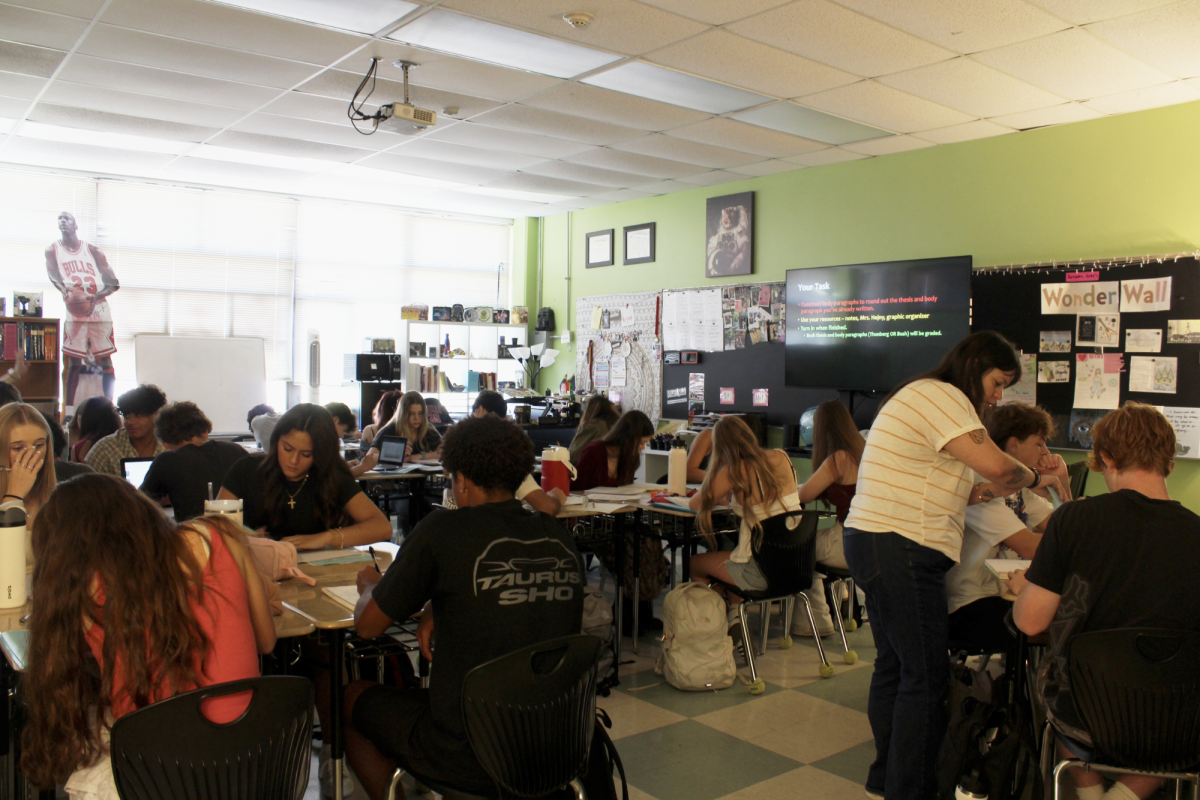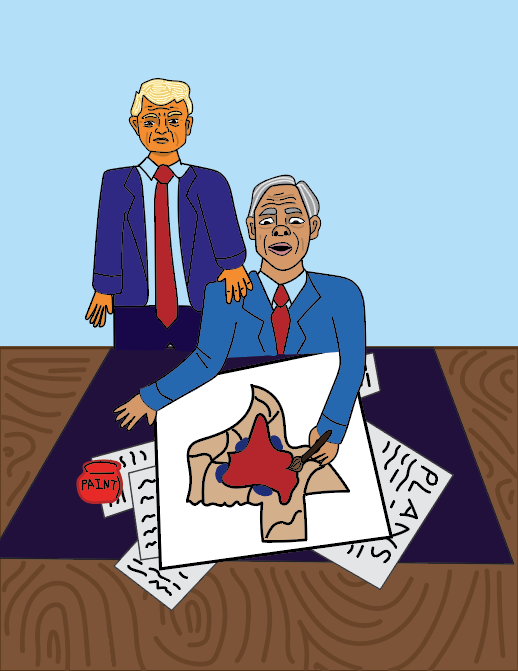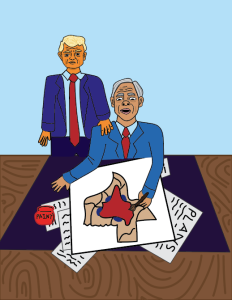‘Tis the season to be accepting
Students celebrate the holiday season in different ways, but with a similar spirit
December 22, 2015
As temperatures drop and chilly air breaks the never ending Texas heat wave, the holiday season begins for a variety of students on campus with a wide range of religions.
A slight smile pulled up on the edges of sophomore Sam Searles mouth as she recited a Hebrew prayer from perfect memory, a look of comfort crossed junior Nour El Houda Remli’s face as she described the many ways she celebrates Eid, and senior Andy Moe’s eyes lit up when explaining the importance of family during Christmas.
The holiday season brings about more than just elves on the shelves and mistletoe, students living in mixed religious homes, like Searles, may experience both sides of the Jewish and Christian holidays during the month of December.
“My mom is Christian, but my dad is Jewish,” Searles said. “When my dad is gone on business trips I celebrate Hanukkah alone, but my mom takes pictures and supports me doing it.”
While the Christian holiday, Christmas, celebrates the birth of Christ, the Jewish population primarily celebrates Hanukkah, or Chanukah. This Jewish holiday commemorates the military success of the Jewish people, who regained control of a holy temple after it had been conquered by the Greeks, as well as the miracle of a menorah that only had enough oil to burn for a single day, but went on to burn for eight in the temple of their victory.
Hanukkah, much like Christmas, is celebrated through charity, prayer, and time spent with family. Additionally, younger children usually receive a gift each day of the celebration.
“My favorite part of Hanukkah was getting Gelt, which is the chocolate coins wrapped in the tin foil,” Searles said. “Adults use it to play poker, but the kids just eat it.”
Nearly 5,200 miles away, across the Atlantic Ocean in Morocco, Africa, Remli separated from her home and family to travel to Austin, Texas as a foreign exchange student.
“The first day I was here I just cried non-stop because I was missing my family, but you get used to it,” Remli said. “There’s a six hours difference and my family doesn’t really know when to call, so sometimes I’ll get a call at seven in the morning.”
The celebration of Eid, similar to Christmas and Hanukkah, practices both charity and prayer, as well as feasting with family. There are two holidays of Eid, the first being Eid-ul-Fitar, a three day celebration of the completion of Ramadan, which is the month when Muslims fast to practice Taqwa, or God-consciousness.
“The fast is during summer, but yesterday I fasted my first day at school since you have to make up the days you didn’t fast in the summer,” Remli said. “You wake up around six, before the prayer, and eat what you can because that’s all you get for the whole day. You fast to feel the pain of poor people.”
The second holiday of Eid, Eid-ul-Azha, is the celebration of sacrifice that lasts for a single day. The holiday is commemorated with prayer and charity as the father of the family will kill a sheep in the name of God and use the sheep to feed not only the family, but also through charity, the poor. Remli spoke calmly and surely as she recalled the celebration that she has experienced each year of her life.
“It is scary to see the sheep being killed, but people say that with every drop of blood God gives you penance for your sins,” Remli said. “You always give part of the sheep to charity.”
Remli’s face lit up in surprise as she learned how Americans, at times, celebrate Christmas by dressing up in red and green, often accompanied by reindeer antlers or a large, puffy Santa hat.
“We used to watch American people celebrate Christmas, but to actually see it here is super cool,” Remli said. “I love how people are so into the Christmas spirit.”
For Moe, the Christmas spirit is all about spending time with family.
“Without a doubt it’s important to spend Christmas with my family. To me, Christmas is a lot about appreciating your family,” Moe said. “My family is really big into decorations; we put up the tree and lights, so it always looks really nice at my house.”
Although the month of December and the holiday season hosts several religious celebrations, it can be hard for students such as Searles and Remli, living in a primarily Christian society.
“I do have one friend who celebrates Hanukkah, but I feel like you really don’t see very many Jewish people in Texas,” Searles said. “Bullies in middle school made sure I felt like a minority; one time people threw crosses at me in the hallway and called me the anti-christ, just because I was Jewish.”
With confusion and anger displayed across her face, Searles recalled the instances in which social media played a role in the anti-semitistic behavior inflicted on her.
“When I have kids I’ll definitely teach them to be accepting of all religions and understand their differences,” Searles said. “I plan to become baptized in the future. To me, it’s fully accepting who I am and my relationship to God.”
Remli also shares experiences with negative responses from people of various faiths, but in a different kind of severity.
“I was walking home with my host sister when a guy stopped next to us in his car and asked me what type of Muslim I was. As I told him, his hand was hidden in the car, you couldn’t see if there was anything in his hand or not,” Remli said. “Sometimes I feel completely welcome, and other times people stare at me in the hallways. But I am very thankful for all the teachers here that have treated me like any other student and all the students who have been kind to me,” Remli said.
Regardless of one’s religious preference, as the weather gets colder and the holidays get closer so does the time to celebrate with one’s family and give back to the community. ‘Tis the season to be accepting.








